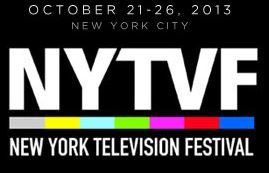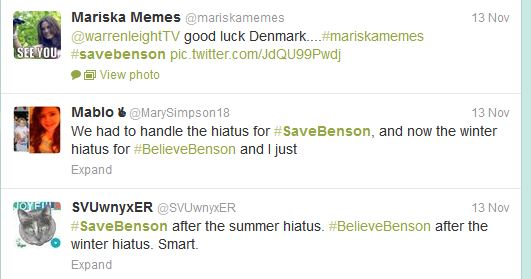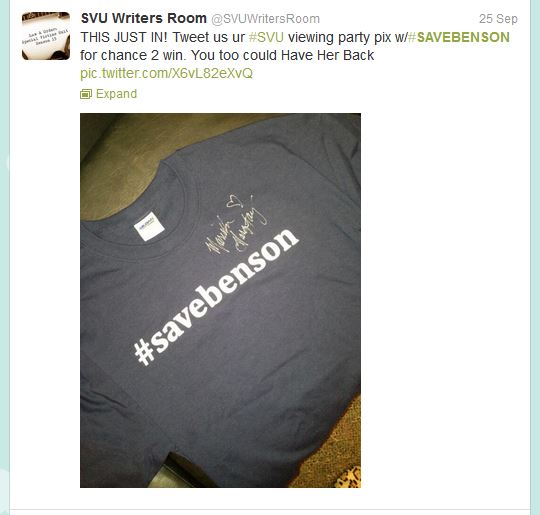Report from New York Television Festival’s Digital Day 2013
 The New York Television Festival (NYTVF) bills itself as festival for independent television. In addition to holding a pilot competition and industry meet-ups, the festival also includes Digital Day, which focuses on TV programing created for online distribution. I attended three panels on Digital Day: Monetization & Funding, The Future of Digital Distribution, and Building an Audience. Throughout all panels, recurring references to Twitter as the best tool to promote independent and mainstream television and to engage with audiences stood out to me.
The New York Television Festival (NYTVF) bills itself as festival for independent television. In addition to holding a pilot competition and industry meet-ups, the festival also includes Digital Day, which focuses on TV programing created for online distribution. I attended three panels on Digital Day: Monetization & Funding, The Future of Digital Distribution, and Building an Audience. Throughout all panels, recurring references to Twitter as the best tool to promote independent and mainstream television and to engage with audiences stood out to me.
The monetization panel introduced two options for funding a web series: crowdfunding or a sponsor/brand liaison. Much of the panel’s discussion focused on how to create a crowdfunding campaign that stands out (“offer personalized rewards” was one suggestion) and how to find a sponsor (one panelist remarked that if great content doesn’t fit a brand, it will have less of a chance of gaining sponsorship). The Digital Distribution panel offered insights into My Damn Channel and CW Seed, including the notion that for online distributors, the boundaries between marketing, distribution, and audience engagement are collapsing because content circulates via social media. CW Seed’s Rick Haskins also rejected the long-standing idea that online video content needs to be short in order to be successful, observing that the CW’s statistics show an increase in mobile viewing of hour-long dramas. “A screen is a screen,” he remarked and explained that convenience trumps quality of the viewing experience.
I found the panel on building an audience most intriguing. The panel highlighted only one way to build an audience: social media, by which panelists meant Twitter. The panel might as well have been subtitled “how Twitter will save television.” Moderator Fred Graver, Head of TV at Twitter, emphasized that Twitter has special values by being live, public, and conversational. The liveness of Twitter came up several times during the panel. The panelists focused on two main strategies for building an audience: branded content or ads that appear in the Twitter stream and showrunners’ /casts’ direct engagement with viewers via Twitter. Graver heralded branded content as “closing the loop” between seeing a tweet and watching television, especially via Comcast’s new “See it” initiative.
The singular focus on Twitter surprised me—after all, there are numerous online platforms on which viewers engage with TV. For example, the complete absence of Tumblr at this panel struck me as significant oversight. In addition, this panel conveyed the idea that the industry has never had the opportunity to engage so directly with audiences before when viewers have discussed television online for decades now, and this isn’t the first time that the industry has discovered online audience engagement. Let’s remember articles like Marshall Sella’s The Remote Controllers from 2002, which describes message boards like Television Without Pity. But Twitter’s liveness—and its potential to foster live viewing—is what sets it apart from more asynchronous sites, and offers a reason why the industry is cultivating Twitter as a TV engagement tool: because it fits the networks’ needs and preferences for advertising and ratings. In addition, Twitter tends to be public and centralized. Instead of trying to locate dispersed audience-created content and opinions on various sites, industry insiders can execute a key word search on Twitter that results in easily accessible data for a range of TV shows.
 Beyond praising Twitter’s general capabilities for connecting audiences and TV, panelists also agreed that paying attention to Twitter has become a must for showrunners and writers. As Embassy Row’s Mike Davis put it, Twitter functions as a barometer of the audience that is more productive than a focus group (although both are similarly limited in offering only a small and very selective slice of the audience). Law and Order: SVU showrunner Warren Leight shared his experiences using Twitter to build buzz for SVU. Leight candidly spoke of NBC’s disinterest in promoting the show and needing to find ways to promote SVU that doesn’t cost the network any money. NBC only considered using Twitter to funnel audiences toward the official SVU website, an effort that Leight deemed unproductive. Calling TV show websites the “rust belt” of the internet, he highlighted the cast and crew’s tweets as better alternative because their tweets, especially images and links, get picked up by an average of ten to twenty entertainment websites in addition to being spread via retweets. Leight’s comments reminded me of the central argument in Henry Jenkins, Sam Ford, and Joshua Green’s Spreadable Media, namely that the industry needs to shift away from keeping content and audiences locked in one place (like an official website) and toward making content mobile so audiences can spread it wherever they want (a model that makes tracking impressions more difficult but demonstrates an understanding of how audiences engage with content today).
Beyond praising Twitter’s general capabilities for connecting audiences and TV, panelists also agreed that paying attention to Twitter has become a must for showrunners and writers. As Embassy Row’s Mike Davis put it, Twitter functions as a barometer of the audience that is more productive than a focus group (although both are similarly limited in offering only a small and very selective slice of the audience). Law and Order: SVU showrunner Warren Leight shared his experiences using Twitter to build buzz for SVU. Leight candidly spoke of NBC’s disinterest in promoting the show and needing to find ways to promote SVU that doesn’t cost the network any money. NBC only considered using Twitter to funnel audiences toward the official SVU website, an effort that Leight deemed unproductive. Calling TV show websites the “rust belt” of the internet, he highlighted the cast and crew’s tweets as better alternative because their tweets, especially images and links, get picked up by an average of ten to twenty entertainment websites in addition to being spread via retweets. Leight’s comments reminded me of the central argument in Henry Jenkins, Sam Ford, and Joshua Green’s Spreadable Media, namely that the industry needs to shift away from keeping content and audiences locked in one place (like an official website) and toward making content mobile so audiences can spread it wherever they want (a model that makes tracking impressions more difficult but demonstrates an understanding of how audiences engage with content today).
 Leight’s recognition of spreadability’s importance also came across in his anecdote about last summer’s #savebenson campaign. The campaign and hashtag originated (unsurprisingly) in fans’ tweets in response to SVU’s season finale. Leight described the surprise and delight of coming across the hashtag. The writers pushed the hashtag to keep conversation going about SVU over the summer. Despite the new ways of engaging SVU viewers, Leight’s ultimate concern and focus is still on ratings. For example, Leight observed that good East Coast Twitter buzz can translate into a ratings bump for the West Coast and highlighted the potential of guest stars with a large Twitter following who can tweet about their guest appearance, which might also translate into an increase in ratings. While there is ultimately no way to correlate Twitter buzz/engagement and ratings increases, Leight’s analysis says much about his investment in Twitter as a space of maintaining interest in a show that is off the network’s (and critics) radar. Overall, Leight described his cast and crew’s Twitter engagement as “complete anarchy” because there are no coordinating talking points for what happens on Twitter. While he mused that the corporate world will likely get very anxious about this free-for-all mentality, Fred Graver added that Twitter advises networks not to interfere because it relieves them of responsibility when inappropriate comments surface.
Leight’s recognition of spreadability’s importance also came across in his anecdote about last summer’s #savebenson campaign. The campaign and hashtag originated (unsurprisingly) in fans’ tweets in response to SVU’s season finale. Leight described the surprise and delight of coming across the hashtag. The writers pushed the hashtag to keep conversation going about SVU over the summer. Despite the new ways of engaging SVU viewers, Leight’s ultimate concern and focus is still on ratings. For example, Leight observed that good East Coast Twitter buzz can translate into a ratings bump for the West Coast and highlighted the potential of guest stars with a large Twitter following who can tweet about their guest appearance, which might also translate into an increase in ratings. While there is ultimately no way to correlate Twitter buzz/engagement and ratings increases, Leight’s analysis says much about his investment in Twitter as a space of maintaining interest in a show that is off the network’s (and critics) radar. Overall, Leight described his cast and crew’s Twitter engagement as “complete anarchy” because there are no coordinating talking points for what happens on Twitter. While he mused that the corporate world will likely get very anxious about this free-for-all mentality, Fred Graver added that Twitter advises networks not to interfere because it relieves them of responsibility when inappropriate comments surface.
The overwhelming focus on Twitter in the panel on audiences, with frequent gestures to Twitter appearing in the other panels as well, was noticeably different from the previous year, when Digital Day centered on second screen apps offering program-related content. It is interesting to speculate, and invite you to do so in the comments, whether or not this emphasis on Twitter constitutes a silent concession that content-based second screen apps are largely failures because the audience won’t budge from Twitter as virtual watercooler.
For more on the NYTVF, check out Aymar Jean Christian’s Can the New York Television Festival Get Past the Pilot?


